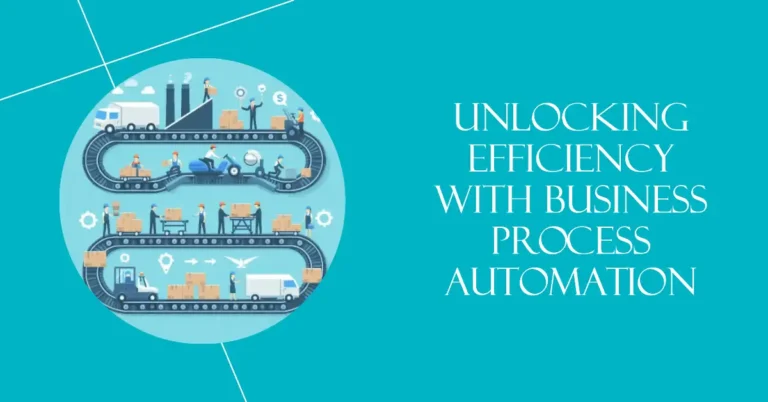Business Process Automation (BPA) is a way to make business tasks easier. It uses technology to complete tasks automatically. Let’s learn more about BPA.

What is Business Process Automation?
BPA is a system that automates business activities. It uses software and tools to perform tasks without human help. This helps businesses save time and reduce mistakes.
Benefits of Business Process Automation
BPA offers many benefits. Here are some important ones:
- Time-saving: Automating tasks helps save time.
- Error reduction: BPA reduces human errors.
- Cost-saving: Automation helps cut costs.
- Improved efficiency: BPA makes processes faster and smoother.
- Better customer service: Automation improves response times.
Examples of Business Process Automation
There are many examples of BPA in different industries. Let’s look at some common ones:
- Invoice processing: Software can automate invoice creation and payment reminders.
- Customer support: Chatbots can provide quick responses to customer queries.
- HR tasks: BPA can handle payroll and employee onboarding.
- Marketing: Automation tools can manage email campaigns and social media posts.
- Inventory management: BPA can track stock levels and reorder supplies.
Steps to Implement Business Process Automation
Implementing BPA involves several steps. Follow these steps to get started:
1. Identify Tasks To Automate
First, identify the tasks that take up the most time. Look for repetitive tasks that can be automated.
2. Choose The Right Tools
Next, select the right software and tools. Make sure they fit your business needs.
3. Train Your Team
Train your team to use the new tools. This helps them understand how automation works.
4. Monitor And Improve
Keep an eye on the automated processes. Make improvements as needed to ensure they run smoothly.
Challenges of Business Process Automation
BPA can be very helpful, but it also comes with challenges. Here are some common challenges:
- Cost: Implementing BPA can be expensive.
- Complexity: Some processes may be too complex to automate.
- Resistance to change: Employees may resist new systems.
How to Overcome BPA Challenges
Here are some tips to overcome the challenges of BPA:
- Plan your budget: Set a budget for BPA implementation.
- Start small: Begin with simple tasks and gradually automate more complex ones.
- Communicate: Explain the benefits of BPA to your team to get their support.
Future of Business Process Automation
The future of BPA looks promising. New technologies like Artificial Intelligence (AI) and Machine Learning (ML) will make automation smarter. This means businesses will be able to automate more tasks with greater efficiency.
1. Artificial Intelligence (ai)
AI can learn and adapt. It will help automate tasks that require decision-making.
2. Machine Learning (ml)
ML can analyze data and make predictions. It will improve automation processes over time.
3. Internet Of Things (iot)
IOT connects devices and systems. It will enable seamless automation across different platforms.

Frequently Asked Questions
What Is Business Process Automation?
Business process automation (BPA) uses technology to automate repetitive tasks, improving efficiency and reducing errors in business operations.
Why Is Bpa Important?
BPA enhances productivity, reduces operational costs, ensures consistency, and frees up employees to focus on higher-value tasks.
How Does Bpa Work?
BPA uses software tools to automate workflows. It integrates various applications, streamlines processes, and minimizes human intervention.
What Are Bpa Benefits?
BPA improves accuracy, reduces costs, increases productivity, and enhances customer satisfaction through streamlined and efficient processes.
Can Small Businesses Use Bpa?
Yes, small businesses can implement BPA to streamline operations, reduce costs, and compete more effectively in the market.
Which Processes Can Be Automated?
Routine tasks such as invoicing, payroll, customer service, and data entry can be automated using BPA solutions.
What Tools Are Used In Bpa?
Common BPA tools include robotic process automation (RPA) software, workflow management systems, and AI-based solutions.
Is Bpa Expensive To Implement?
Costs vary, but many BPA solutions offer scalable options, making them affordable for businesses of all sizes.
Bottom Line
Business Process Automation is a powerful tool. It helps save time, reduce errors, and cut costs. By following the steps to implement BPA, businesses can improve efficiency and provide better customer service. The future of BPA is bright with advancements in AI, ML, and IoT. Embrace automation and take your business to the next level.
Related Content
Choosing the right Business Structure
How to do Market Research for New Startups
Identify the Principal Characteristic of an Entrepreneur
Why Negotiation is Important in Business
Relationship Between Stress And Creativity: Unleashing Potential
The Power of Self-Belief in Entrepreneurship: Real-Life Success Stories
Stages of a Startup: Key Milestones to Success!
Business Requirement Document Essentials: Unlock Success!



